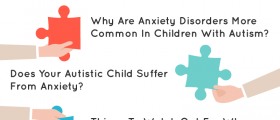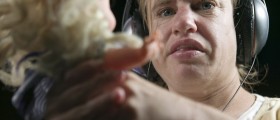
The main goal of sensory integration therapy is helping individuals who suffer from sensory integration dysfunction. However, some of the treatments designed through this process are yet to be proven efficient, such as the sensorimotor handling. On the other hand, some methods of treatment have undergone studies and have shown some positive results.
Basically, the methods which have been proven useful, to various extents, are usage of the prism lenses, application of physical exercising, auditory training, stimulation through pressure etc. Nevertheless, more empirical evidence is necessary for the exact confirmation of the effectiveness of the methods of sensory integration therapy.
Sensory Integration Therapy with Children
When a child suffers from sensory integration dysfunction, he/she usually has problems with the senses of touch, taste, sight, smell or hearing, even though there were cases where movement was affected too, along with one's coordination. Usually, this condition is tightly related to autism and other such neurological conditions.
People who suffer from sensory integration dysfunction may find it difficult to wear clothing made of certain materials and textures, due to the fact that these might cause them discomfort. Also, tasting certain food, hearing specific sounds or getting exposed to other sensory experiences may have the same result. This mostly happens once the brain of the affected individuals is incapable of filtering the background stimuli, sorting out the more important information from the less important one.
Taking all the factors mentioned above into consideration, the sensory integration therapy for children needs to challenge all of their senses during each session. So, different forms of sensory challenges need to be incorporated in the therapy and available in the session room.
These are Just Right Challenge, where the challenges are delivered through playing, Adaptive Response, where the child needs to show adequate behavior once facing the challenge, Active Engagement, leading the child into participation due to the entertaining factors of the activities themselves and the Child-Directed factor, where all the activities are related to the preferences of the child him/herself.
Yet, the therapy needs to keep the stimuli under control, avoiding exposing the child to more than he/she can cope with. The amount of intensity of exposure needs to be compatible with the child, being more prominent in cases of low sensitivity and less prominent with children who are highly sensitive to stimuli. The participation of the children is motivated through a well-designed reward system.
Learning New Skills Involving Movement
Some children with sensory integration disorders may find cuddling, caressing or other signs of affection disturbing. Subsequently, parents may be quite bothered by this and may seek help through sensory integration therapy.
Basically, autistic children who are hypersensitive may find it easier to start the hugging procedure on their own that to be passively involved in one. Also, they might accept touching and physical contact more once they themselves engage it and appreciate strong movements and contact more than light and vague one. Moreover, some contact which is initially rejected, may become tolerated later.
When this dysfunction is related to the sense of touch, the therapist needs to turn this towards the benefit of the therapy itself. Namely, once a child enjoys sticky sensations, the therapist needs to incorporate glue, play dough, stickers, rubber toys or some other items into the therapy. Many autistic children react positively to affection displayed through firm contact, such as wrapping one in a blanket and holding him/her tight.
So, through experiment and assessment, the therapist finds movements which the child reacts to positively, using them in the future.
Depending on the problematic sense and skill, the therapist develops activities which help the child overcome this issue. This can take place through tactile or some other forms of exercises and activities.
Research on Sensory Integration Therapy
As it was mentioned above, even though this form of therapy is widely used, little empirical evidence is obtainable, bearing witness of the productivity and effectiveness of it. Many studies were carried out, but none of them was dedicated to this form of data acquisition.
Yet, we have information of the effectiveness of sensory integration therapy through patients who responded positively. Namely, in September 2001, a 5 year-old Elizabeth, suffering from DS, was exposed to sensory integration sessions a week. The therapy was directed towards developmental training related to the neuromuscular factors, reflexes and certain oral-motor skills. According to the reports of the therapy progress, the child was happier, deprived of former frustrations, advancing through the program, especially in terms of playfulness, eye contact and following complex instructions.
All in all, sensory integration therapy deserves more researching and scientific attention. It is a groundbreaking form of treatment which can help many children affected by neurological disorders, regardless of the severity of their conditions or the manifestations of it.
Therefore, if your child is experiencing some of the above mentioned sensory problems, do not be afraid to learn more about the sensory integration therapy and give it a try.

















Your thoughts on this
Loading...